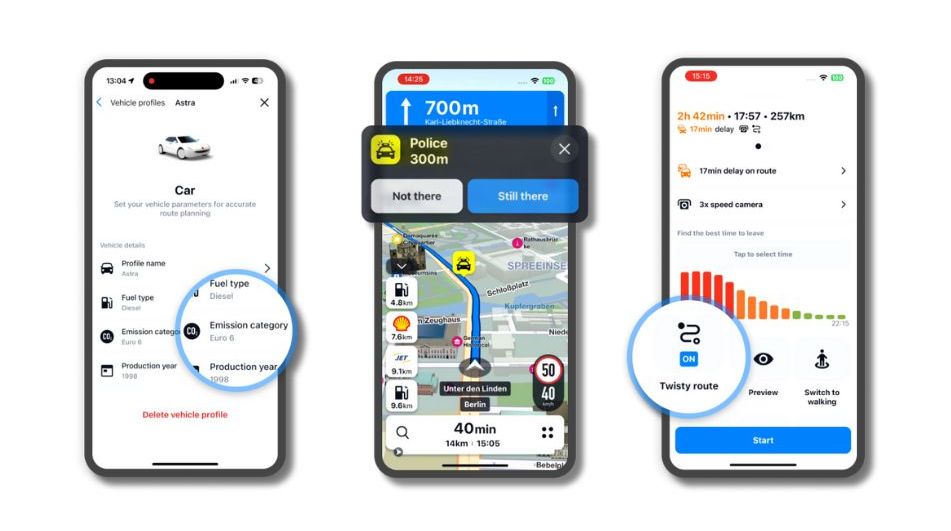Maximizing the benefits of the map data for new useful features, Sygic is taking a reasonable step forward for sustainable and efficient travelling. On top of the solid daily-use features like low emission zones and incident confirmation, a twisty road mode for adventurous riding is here for all lovers of beautiful country views.
For those planning a trip to cities, especially in France, Germany, or Italy, Sygic brings a practical feature that helps avoid emission-restricted locations. Drivers of petrol cars that don't meet Euro 4 standards and diesel cars out of Euro 6 standards are not allowed to enter environmental zones or need to pay a daily charge. If someone prefers to go around, the specification of a vehicle's emission category, production year, and fuel type is possible. Based on them, the navigation will calculate a suitable route.

Live traffic information is now standard in all relevant navigations, including Sygic. Incident reporting is a specialty of one of the most popular Sygic competitors; however, this feature now gets a new UX improvement in Sygic for iOS. “Monthly, we get 200k incident reports from our users, which is a good reason to focus on this feature's quality in the long term and maximize our support for drivers on the road,” Head of Product at Sygic Lukas Dermek specified their plans. Drivers can not report an incident only as usual. Now, they can also confirm it while passing by, thus helping the community of other Sygic users get proven updates on their route. A single tap on a pop-up incident notification makes the information more relevant and precise.
With a growing number of motorbikers using Sygic GPS Navigation, Sygic decided to add a new vehicle profile option for motorbikes. It allows two-wheelers to choose a particular route via "twisty roads", promising adventurous journeys beating around spectacular panoramas. With Twisty Roads on, detours, sharp curves, and uphills in remoted locations are gaining value over the traditionally preferred plain, shortest, or fastest routes and urban areas.
